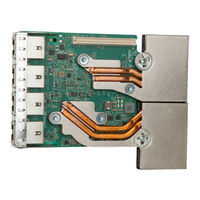Cavium QL41162HLRJ-DE Manuals
Manuals and User Guides for Cavium QL41162HLRJ-DE. We have 2 Cavium QL41162HLRJ-DE manuals available for free PDF download: User Manual
Cavium QL41162HLRJ-DE User Manual (321 pages)
Converged Network Adapters
Table of Contents
-
Preface
18 -
-
-
Statistics41
-
-
-
-
-
-
-
Enabling DCQCN188
-
Configuring CNP188
-
MAC Statistics189
-
Script Example189
-
Limitations190
-
-
-
Before You Begin204
-
-
-
Iscsi Boot216
-
-
-
Configuring VMMQ279
-
-
In the VM282
-
-
-
Troubleshooting
298-
Adapter LEDS
303
-
Glossary
313
Advertisement
Cavium QL41162HLRJ-DE User Manual (235 pages)
Converged Network Adapters
QLogic 41xxx Series
Table of Contents
-
Preface
13 -
-
-
Statistics35
-
-
-
System Setup58
-
-
-
Iscsi Boot90
-
-
-
-
-
-
-
Before You Begin169
-
-
-
Configuring VMMQ191
-
-
Troubleshooting
216 -
Adapter LEDS
221
Advertisement

